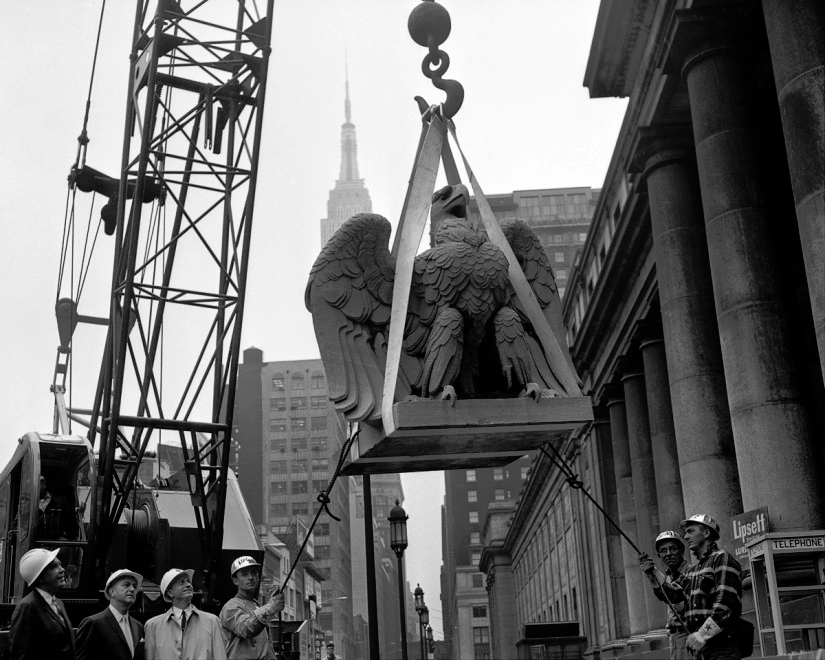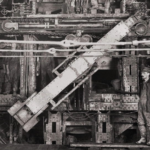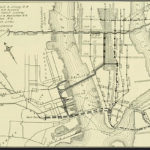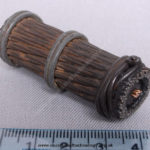Part 2 of this article looked at the amazing engineering and construction of dual under-river tunnels that were constructed to connect NY’s Manhattan Island to New Jersey and the rest of the mainland US and the electric locomotives that made the project possible. This final part looks at the design, short life, and sad fate the Pennsylvania Station, built as the terminal for the NY end of the tunnels.
The station as a temple
Only a few words are needed to describe Penn Station: huge and opulent, and photos can only hint at it (Figure 1a and 1b, and Reference 7). Although intended for the masses, it was a palace, a “cathedral of the industrial age,” and “a monument for the ages.” After six years of construction, Pennsylvania Station opened to the public on November 27, 1910. Although there was a budget and schedule, many design decisions were made based on esthetics more than cost. There was a short-lived plan to place a hotel on top of the station for some revenue, but it was discarded primarily because it would ruin the sheer grandeur and imposing presence of the station (and also would require removing two of the tracks, to make room for supports).

A few numbers tell the station’s story, along with the many available photos. It used 27,000 tons of steel, 500,000 cubic feet of pink granite from Milford, MA, and 17 million bricks, all enclosed by 83,000 square feet of skylight 150 feet above the main floor. It was the fourth-largest building in the world in basic footprint.
From an engineering perspective, the major challenges were below the huge main floor with its waiting room. The station serviced 22 main tracks, with extra tracks providing the equivalent of full train-yard operations and service. To build this underground yard, a pit between 60 and 100 feet deep was dug across the entire site to the tunnel mouth at the Hudson River, again mainly with pneumatic drills and hand shoveling. While this pit was dug, the streets alongside its edges were shored up, and the elevated train lines which ran above them were buttressed so there would be no interruptions in access or service.
The end: soon for one, not for the other
The future is hard to predict, that’s not news. No one in the railroad business foresaw that by the 1940s, the primary mode of personal transportation would increasingly be cars, with aircraft for longer distances. Freight moved on trucks with their greater logistics flexibility, and on improved roads. In 1946, the PRR actually lost money for the first time, even though the Penn Station itself handled 100 million passengers in 1945. Ironically, the electric-traction motor whose development made the tunnels viable, and whose further development was driven by tunnel needs, is now the prime mover is many rail system (Europe, for example) — another example of advances in one area removing barriers in others.
The situation continued to decay, and by 1960 when the PRR was approaching bankruptcy, management decided on the unthinkable: demolish Penn Station and sell the air rights. There were protests that this magnificent “public” space shouldn’t be destroyed, but since the PRR owned the station and the land, there was no legal impediment to the plan. Where Penn Station stood, Madison Square Garden – a venue for sports and concerts – was built to replace this monument to railroads. The station’s demolition began on October 28, 1963, just 50 years after it opened as a “wonder of the world” and took three years (Reference 8).
Much of the debris from the teardown was ferried across the Hudson River and dumped in the New Jersey Meadowlands, in an ironic twist since that is where the train connection “problem” began. One of the 22 huge eagles carving which lined the top of the station now sits in front of the “Garden” as a remembrance of the station (Figure 2) while the others were abandoned (although some were later recovered and moved to various institutions or other train stations as lawn ornaments).

The destruction of Penn Station was the impetus for the establishment of the New York City Landmarks Preservation Commission and laws that put restrictions on modifications to buildings that have been designated as public landmarks. In another twist of fate, there is now serious talk of tearing down the so-called “Garden” which replaced Penn Station, as it is showing its age, and building a new one a few blocks away. (Note that the appellation “Garden” is completely misleading, as it has no garden and no sunlight at all. It is named after a previous, long-gone entertainment hall in nearby Madison Square.)
Today’s Penn Station is a dreary, depressing place, the complete antithesis of what it was, yet it still serves between 300,000 and half a million riders each day. As with other grand designs and engineering marvels such as the cable-laying ship S.S. Great Eastern (References 9 and 10), it looked like their time could never end. Yet, it ended much sooner than anyone ever imagined. Over the last decades, there has been quite a lot of talk and some progress on building a new Penn Station across the street from the old one, to be called the Moynihan Train Hall. This multibillion-dollar project “repurposes” the now largely unused, huge Farley Post Office in New York, built as a companion piece to Penn Station in the same style by the same architects (Reference 11). The tunnels are also showing their age, and need major upgrades or replacement with parallel tunnels, but this project is mired in cost, politics, and other issues.
As the PBS video (Reference 12) notes, “Cassatt planned for the future, but could not envision one where people would travel by car or air rather than railroads.” Still, the completion of this massive project ahead of schedule (under five years from concept to completion) and on budget, yet without many of the tools or techniques we now have, is a testament to the vision, determination, and energy of the men who made it happen despite challenges and naysayers.
This was an era when “industrialists” and “captains of industry” could build as they wished, without asking for approval or the even need to do so. Huge projects were financed privately without government support or funding and moved ahead as quickly as the technology and reality would allow. Cassatt and his team designed and completed both the tunnels and the station in less time than just the proposals, reviews, budgeting, and planning processes alone would take in the 21st century.
That’s something to ponder.
References (these are just a few of the hundreds of references available via books and web sites)
- com, “New Hudson River rail tunnels needed so old tunnels can be repaired”
- Washington Post/Bloomberg. “Why a Rail Tunnel Under the Hudson River Is Stuck in Washington”
- Popular Mechanics, “Why Seattle’s Huge Tunnel-Boring Machine Is Still Stuck”
- Bloomberg, “Stuck in Seattle“
- Wikipedia, “Pennsylvania Railroad class DD1”
- Fandom, “Pennsylvania Railroad Class DD1”
- CityLab, “10 Gorgeous, Nostalgic Photos of New York’s Old Penn Station”
- Mashable, “1910-1963: The destruction of Penn Station”
- EE World, “The first undersea transatlantic cable: An audacious project that (eventually) succeeded, Part 1
- EE World, “The first undersea transatlantic cable: An audacious project that (eventually) succeeded, Part 2”
- Wikipedia, “James A. Farley Building”
- American Experience PBS Video, “The Rise and Fall of Penn Station,” 2014
- New York Preservation Archive Project, “Pennsylvania Station”
- Jill Jones, “Conquering Gotham—A Gilded Age Epic: The Construction of Penn Station and Its Tunnels,” Viking, 2007
- Lorraine Diehl, “The Late, Great Pennsylvania Station,” Four Walls Eight Windows, 1996








Leave a Reply
You must be logged in to post a comment.